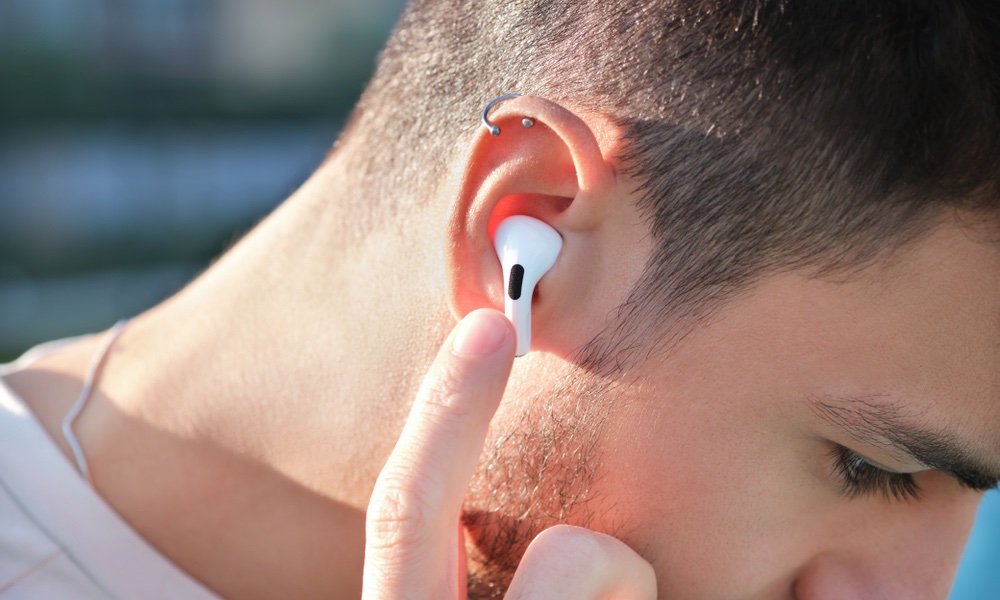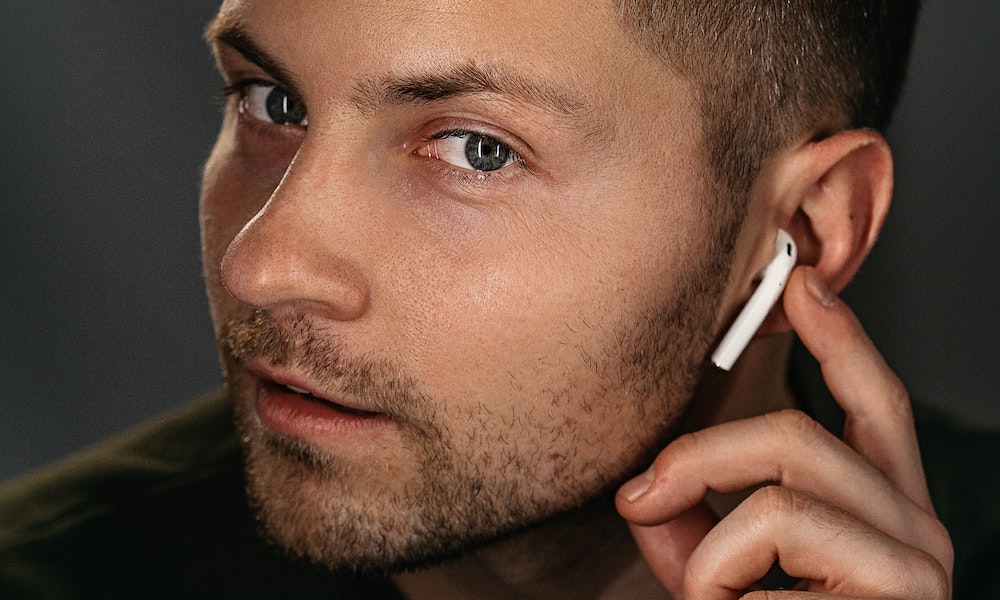AirPods Could Be Used to Signal Chronic and Acute Illnesses, Apple and Cornell Researchers Discover
 Credit: Yasar Turanli / Shutterstock
Credit: Yasar Turanli / Shutterstock
Toggle Dark Mode
We’ve been hearing rumours for years that Apple is working on adding advanced health sensors to its AirPods, but now a new study shows that even the current AirPods can be used to monitor certain health conditions, using nothing more than the built-in microphones.
According to a new paper published in Apple’s Machine Learning Journal, researchers have figured a way to use a normal set of AirPods to estimate a wearer’s respiratory rate (RR).
The study, which was conducted by Apple in partnership with researchers at Cornell University, refers generically to “wearable microphones,” and while researchers did, in fact, use AirPods to conduct the tests, the goal is to design an approach that can be used with any “microphone-enabled, near-range headphones.”
The key to the study is using these wearable microphones to capture “breath audio” which can then be used to calculate the user’s respiratory rate (RR), which the paper describes as “a clinical metric used to assess overall health and physical fitness.”
How It Works
Researchers from Apple and Cornell used a “model-driven approach” that took short audio segments recorded by wearable microphones and analyzed them for inhalations and exhalations to get an estimate of a user’s respiratory rate.
This work investigates a model-driven approach to estimate RR from short audio segments obtained after physical exertion in healthy adults. Data was collected from 21 individuals using microphone-enabled, near-field headphones before, during, and after strenuous exercise.
While at the most basic level, the technology is simply counting breaths, this is considerably more complicated in the real world, where machine learning technology needs to factor in to adjust for elements like background noise conditions. The AI techniques the researchers developed were also able to predict the onset of heavy breathing rates, deems to be more than 25 breaths per minute.
To collect data for the study, researchers used AirPods to monitor 21 healthy individuals during exercise in both indoor and outdoor environments. The team notes that AirPods were selected both due to their popularity and the many ways in which they’re used.
All data was recorded using microphone-enabled, near- range headphones, specifically Apple’s AirPods. These particular wearables were selected because they are owned by millions and utilized in a wide array of contexts, from speaking on the phone to listening to music during exercise.
Participants were asked to undertake a nine-minute workout session, with six minutes of physical exercise designed to induce heavy breathing, and record one-minute audio clips before, during, and immediately after their sessions, plus one more during their cool-down period.
Each participant also wore an Apple Watch during the study to record pulse rates at key points in the exercise session so that these could be compared to the recorded audio clips. Exercises included running, biking, high-intensity interval training (HIIT), calisthenics, fast walking, and walking up an incline.
Why This Matters
As the research team explains, changes in a person’s respiratory rate can signal a wide number of different health conditions, from chronic illnesses such as asthma and congestive heart failure to acute illnesses such as infections.
The subject technology facilitates the use of accessible, aesthetically acceptable wearable headphones to provide a technologically efficient and cost-effective method to estimate respiratory rate and track cardio-respiratory fitness over time.
Even in an otherwise healthy person, their respiratory rate can also be used to determine levels of alertness or physical exhaustion, tracking normal fitness levels and perhaps warning users when it’s time to slow down.
What’s particularly compelling about this discovery, however, is that until now, users have had to visit a healthcare professional to undergo tests to determine their respiratory rate. This method could allow a user’s respiratory rate to be at least roughly measured simply by wearing a set of AirPods.
Not surprisingly, this won’t be nearly as accurate as using clinical equipment, but like many of the Apple Watch health features, it could provide a reasonable enough estimate to let someone know when they should seek medical attention.
While sensors such as thermistors, respiratory gauge transducers, and acoustic sensors provide the most accurate estimation of a person’s breathing patterns, they are intrusive and may not be comfortable for everyday use. In contrast, wearable headphones are relatively economical, accessible, comfortable, and aesthetically acceptable.
This generally fits with Apple’s strategy in many other health areas. For example, the Apple Watch provides notification of irregular heart rhythms, along with a built-in ECG feature, and while neither of these provide clinical data, numerous lives have been saved by prompting folks to seek medical help for conditions that would have otherwise gone ignored.
In fact, the ability to take routine respiratory rate measurements could very well be just as important as the irregular heart rhythm notifications that Apple introduced to the Apple Watch several years ago. Conditions like atrial fibrillation often go undetected for years, since they occur so intermittently that it’s unlikely to be happening when the person is actually being examined by a doctor or other health professional.
Respiratory rate tests done in a hospital or lab environment are similar “point in time” snapshots of a person’s health that may not signal a potentially life-threatening condition. On the other hand, a set of AirPods can provide much more frequent measurements of respiratory rate, alerting a user to conditions that may warrant further investigation by a medical professional.
This is only a study right now, of course, but with Apple’s focus on leaving a legacy of improvements to health care, and frequent rumours of AirPods with health monitoring features just around the corner, it’s fair to say we can expect to see this sort of thing become a reality sooner rather than later.







